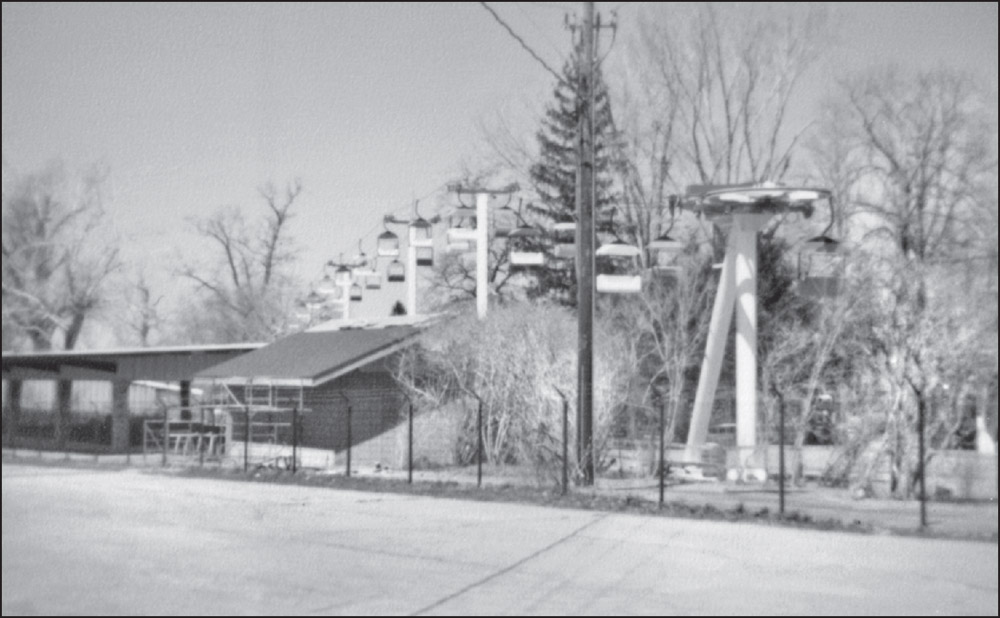Three
THE JOY SPOT OF ERIE
1940S–1970S
As the darkness of the Depression began to fade, the clouds of war reared their head. It was a challenging time for the amusement park industry as travel restrictions, fuel rationing, and material shortages closed many parks, while the booming wartime economy provided a much-needed financial boost to others.
Although attendance initially fell at Waldameer, when the ban on pleasure driving was lifted in 1944, the park saw a 50-percent increase in business. In 1945, as the war was winding down, two events cemented the future of Waldameer. After leasing the facility for two decades, Alex Moeller finally was able to purchase the park. That same year, a family friend, the Nelsons, arrived with their 11-year-old son Paul. He was enamored with the park and soon began working there. It began a relationship that continues to this day.
A series of storms in the 1930s and 1940s wiped out the remainder of the beach. However, with the war ending, Waldameer again looked to the future. After five years of planning, a roller coaster returned to the park in 1951 in the form of the Comet. In response to the postwar baby boom, more kiddie rides were added in a separate kiddie land.
The growing park enjoyed a better fate in those postwar years than many of its counterparts who were hard pressed to remain relevant in a changing world. Throughout the 1950s and 1960s, amusement parks faced urban decay, aging facilities, and the rise of interstates and air travel that brought once distant destinations closer.
As many of Waldameer’s larger counterparts closed, Nelson was taking on a higher profile, having assumed the role of general manager in 1957 and full management control upon Moeller’s death in 1965. He began modernizing the aging facility, replacing the wooden concession stands with all-steel buildings, filling ravines to increase useable acreage by one-third, upgrading utilities, and planting new trees. Throughout the 1970s, improvements continued, and many rides and attractions that remain popular to this day, including the Whacky Shack, Pirate’s Cove, and L. Ruth Express, made their debuts.
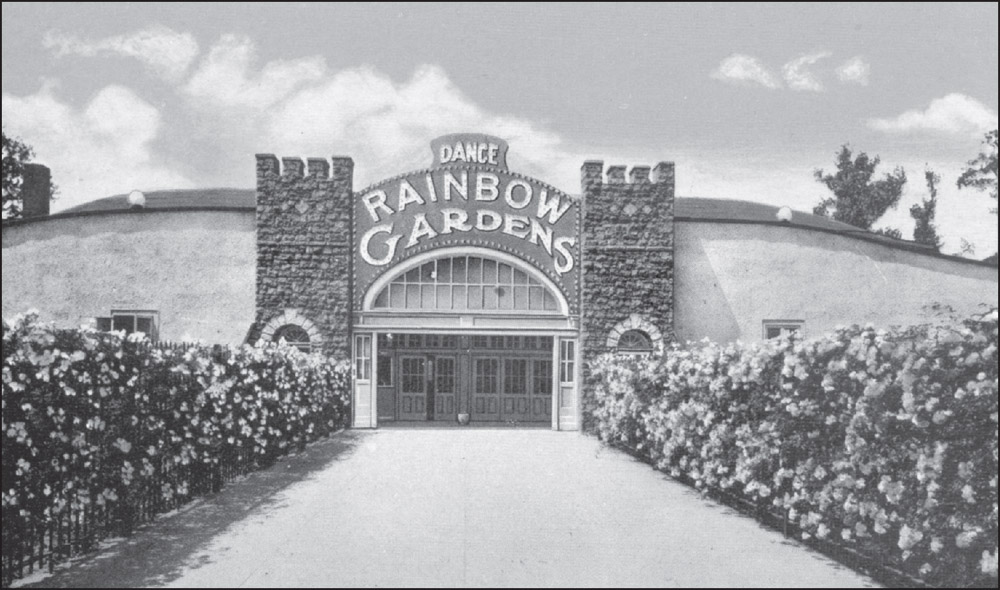
Waldameer Park began the 1940s on a high note with the replacement of Rainbow Gardens with an all-new version. Following the failed experiment with outdoor dancing, patrons flocked back to the new indoor ballroom that had a capacity of 3,000. It remains in use to this day. (JF.)

In October 1941, one of the park’s oldest features, the German Village restaurant, was destroyed by fire. A dinner for 1,500 was under way at the time, and while everyone was safely evacuated, 11 people were injured, and a waitress perished when she went back inside to retrieve her coat. (WP.)
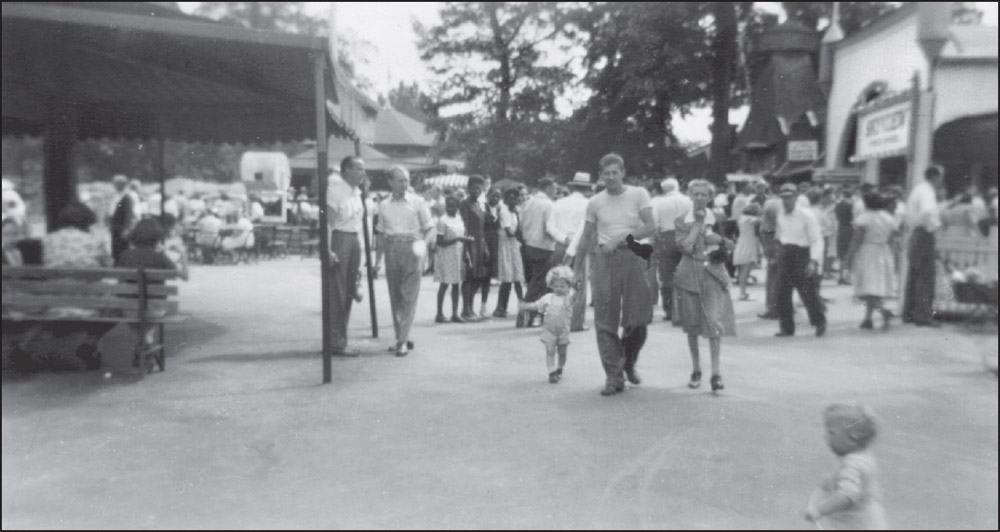
By 1942, America was fully involved in World War II. With materials in short supply, the park was sometimes forced to improvise. For instance, in 1942, they paved the parking lot with scrap rubber. But despite the restrictions, the economy of Erie was booming as factories were operating at capacity to support the war effort. As a result, Waldameer’s midways were crowded with those that could make it to the park. (WP.)
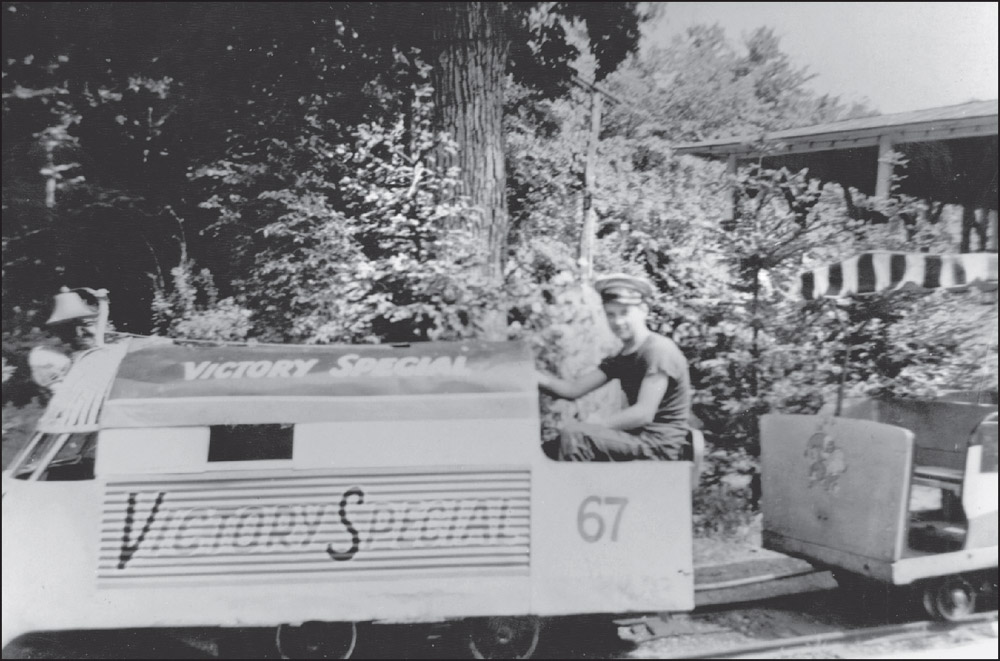
Waldameer Park fully supported the war effort, holding benefit days for the Army-Navy relief fund. In addition, several rides were given patriotic names and paint jobs, including the train, which was renamed the Victory Special. (WP.)

A summer afternoon at Waldameer finds the park crowded with families. In the background, a crowd gathers around the Monkey Island, while a photographer takes pictures of a child nearby. (WP.)
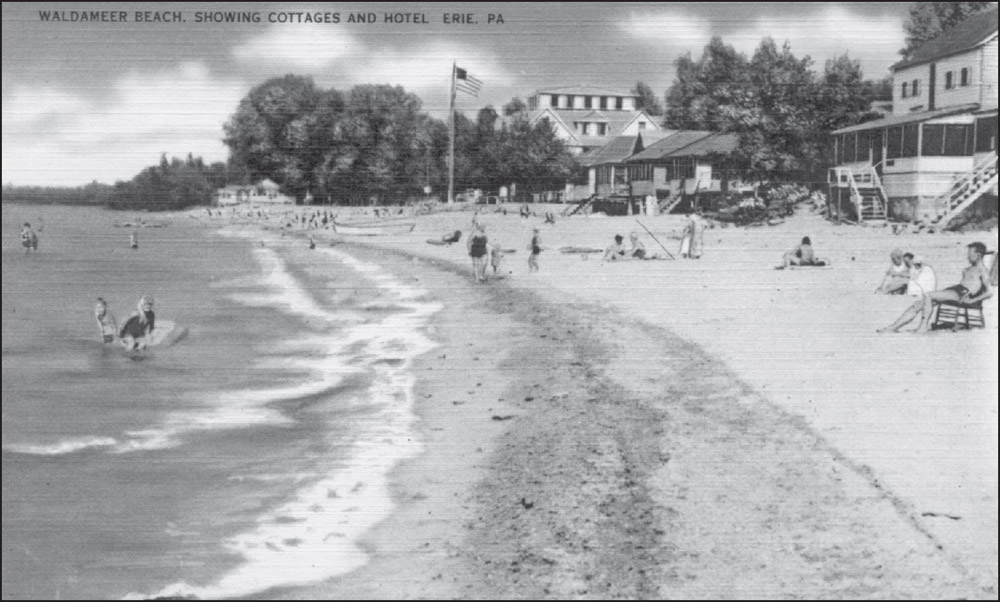
During the 1930s and 1940s, a number of storms washed away the remainder of Waldameer’s beach. To stop the continuing erosion, the US Army Corps of Engineers built a large break wall out of large stones parallel to the shoreline. Waldameer’s beach has not been used since then. (JF.)

Through the 1940s, the north end of Waldameer Park was anchored by a large concession stand and the Fun in the Dark. The Fun in the Dark was built by Pretzel Amusement Company of New Jersey. Founded by William Cassidy, who is credited with inventing the tracked dark ride, Pretzel built over 1,400 throughout its existence. (WP.)
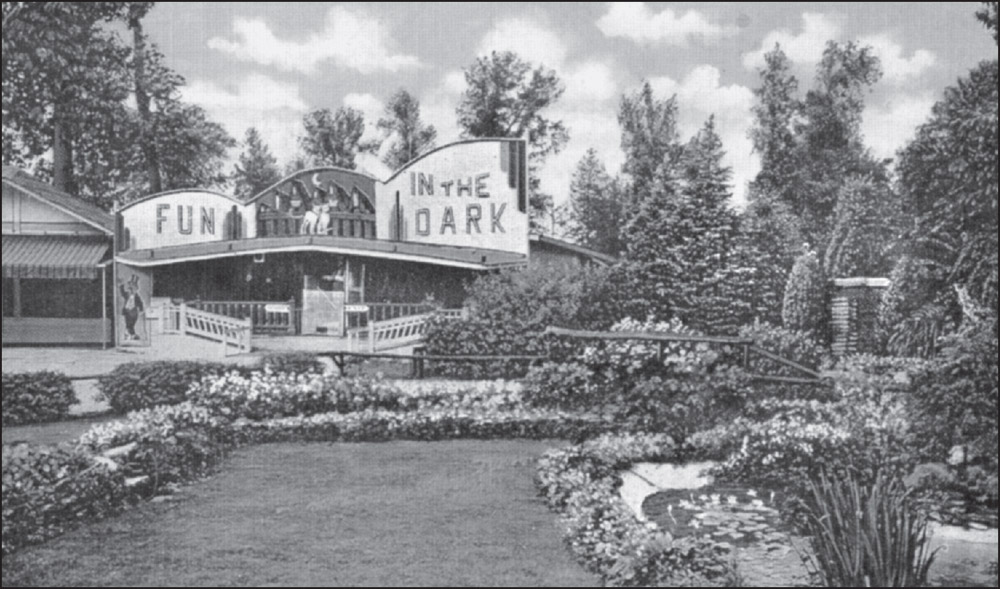
Replacing the fun house, Fun in the Dark was a classic dark ride in which patrons rode two-person cars along a winding track through darkened rooms where a variety of mechanical stunts would surprise riders. Included along its 425 feet of track were 10 animated figures, including Laughing Sam. It was sold following the 1950 season. (RS.)
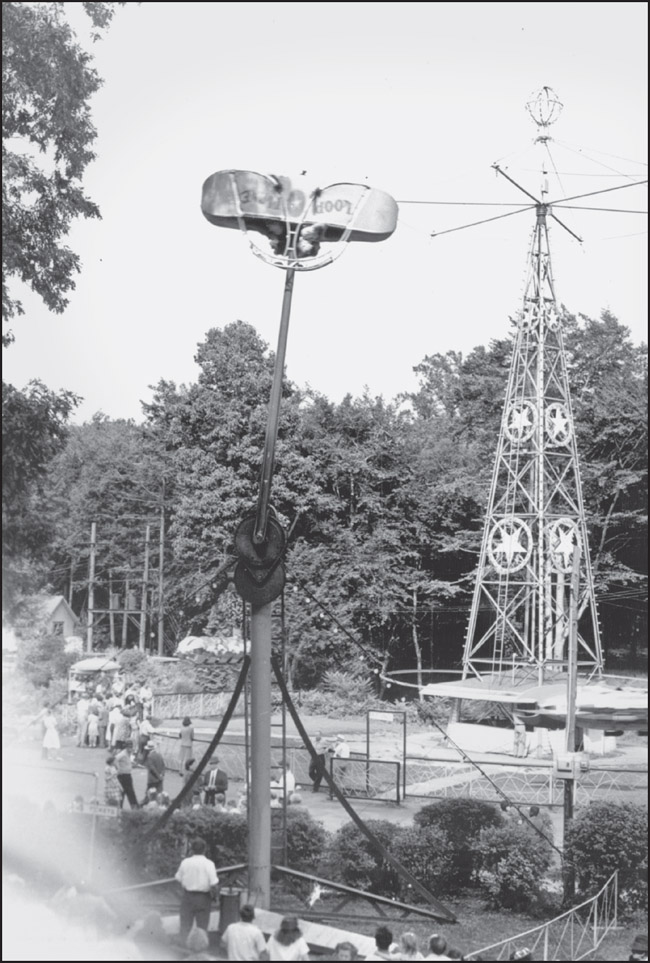
One of the first true thrill rides to adorn amusement park midways was the Loop-O-Plane. Invented in 1933 by Lee Eyerly, founder of Eyerly Aircraft Company of Salem, Oregon, it flipped four people completely upside down. Later versions featured two cars. (WP.)

In this picture, Waldameer’s Loop-O-Plane operators take a few minutes to relax. The Loop-O-Plane was located in the heart of the midway in front of the Aerial Swing. (WP.)
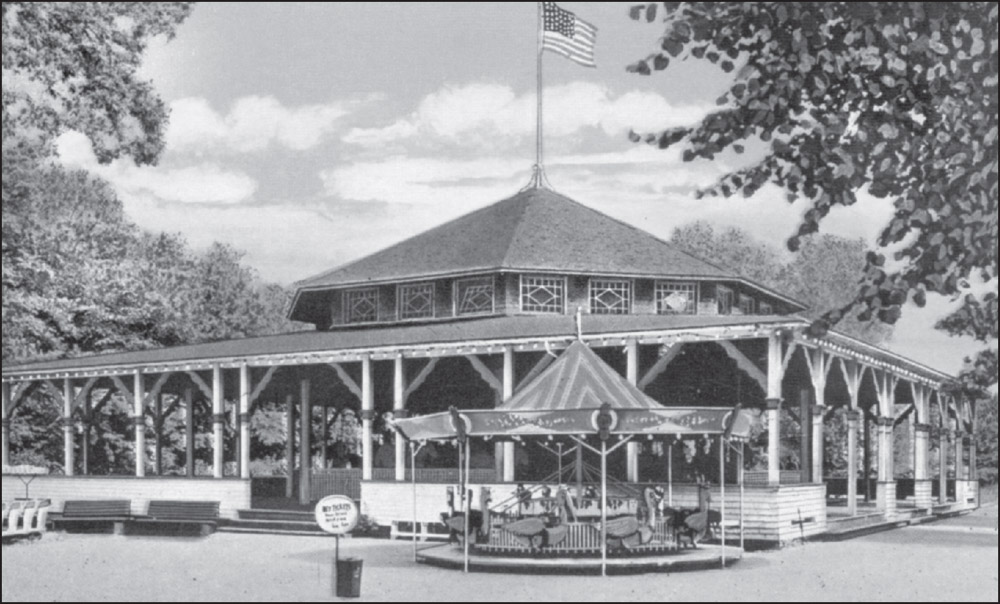
By the 1940s, the carousel has been relocated back to its original building. By this time, kiddie rides, which started appearing at amusement parks in the 1920s, were well established at Waldameer Park. One of the first was the Blue Goose, located next to the carousel, which gave children rides in oversized geese and storks. (WP.)
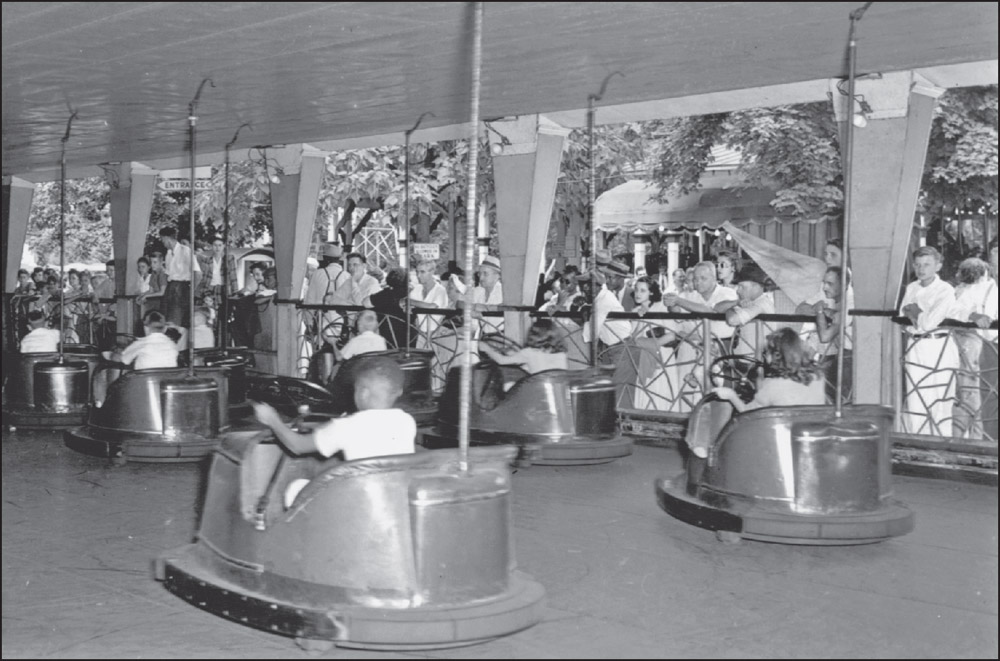
Another classic amusement park attraction that has entertained Waldameer Park patrons for decades was the bumper cars. Bumper cars were invented in the years following World War I and soon were found in most amusement parks. While the cars and buildings have changed at Waldameer, the thrills remain the same. (WP.)

To help offset the drop in traffic during World War II, Waldameer Park would offer free acts on its stage. Located in the northeastern corner of the park, the stage was a longtime fixture. (WP.)


The stage was a center of activity for the community and offered everything from live entertainment to ethnic festivals to political rallies. (WP.)


This picture looks toward the northwestern section of Waldameer Park in the 1940s. The picnic shelter in the background is the former station of the Ravine Flyer. On the left is the refreshment stand, which dates back to the earliest days of the park. (WP.)
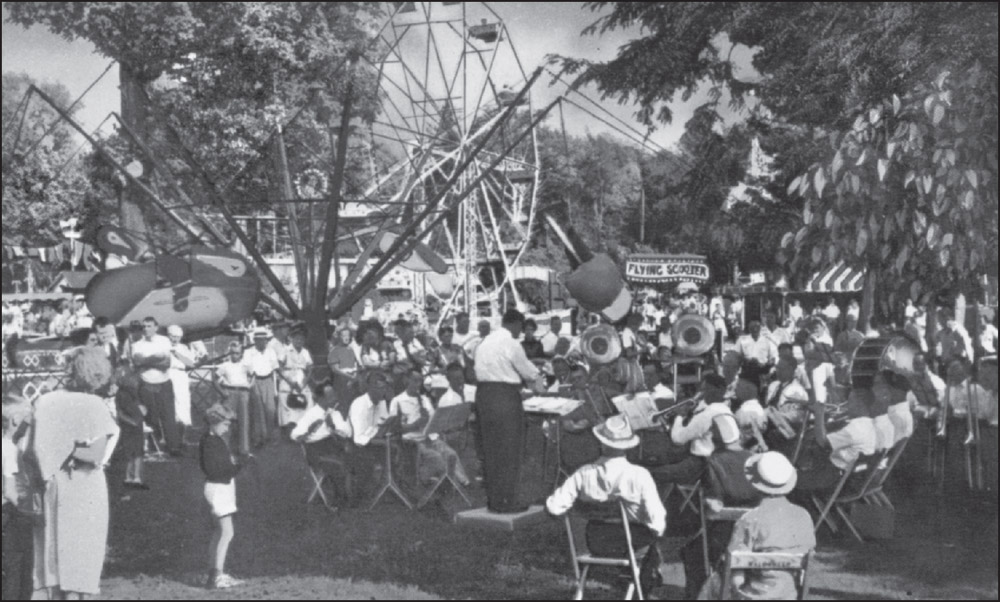
Several rides made their first appearance in the 1940s, including the Flying Scooter. The Flying Scooter was invented in the late 1930s and immediately became a popular attraction. In this picture, several patrons are enjoying a band concert, while the cars fly by. (JF.)

Built by the Bisch Rocco Company of Chicago, Illinois, the Flying Scooter was one of the first participatory rides. Riders would be able to control the motion of each tub by moving a large wing mounted in the front back and forth. Even today, the ride remains popular and “snapping” the cables is considered the ultimate accomplishment for aficionados of the Flying Scooter. (Above, JF; right, WP.)

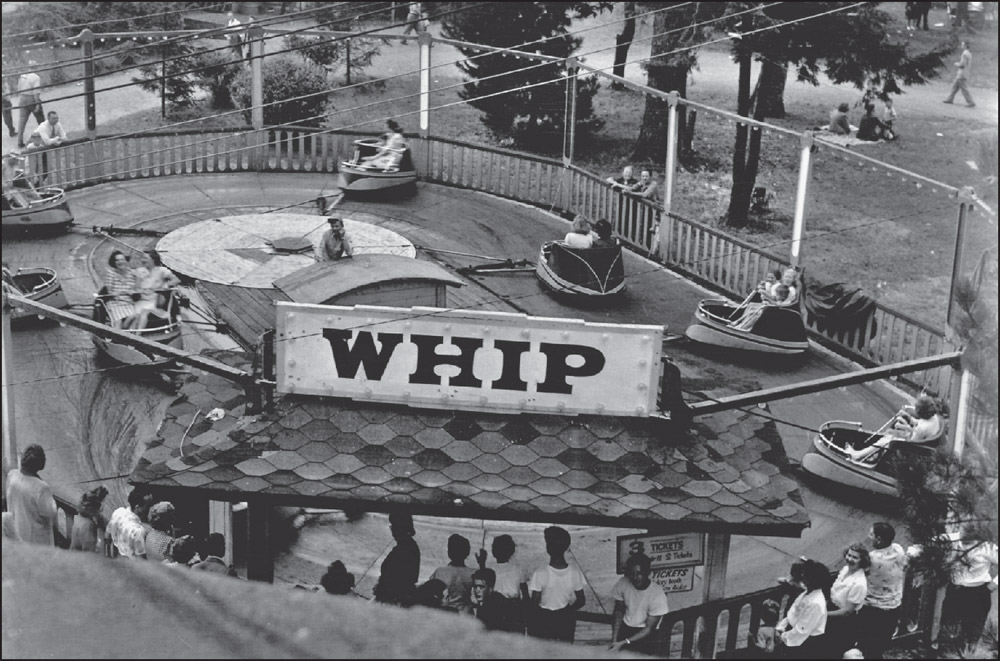
In 1944, with wartime restrictions easing, Waldameer Park was able to undertake an expansion and add three rides, including the Whip. The ride features two-person cars that “whip” around the corners increasing the sensation of speed. (WP.)

By 1944, the Whip was a longtime favorite at amusement parks. It was originally invented in 1918 by William F. Mangels of Coney Island, New York. It is considered one of the first “flat” rides to operate at amusement parks, the forerunner of today’s spinning rides. Waldameer’s Whip was sold following the 1947 season. (WP.)

The park also added a Ferris wheel to its lineup in 1944. Originally invented in 1893 by George Ferris for the World’s Columbian Exposition, Waldameer’s wheel was manufactured by the Eli Bridge Company of Illinois. Eli Bridge created a smaller version of the Ferris wheel in 1900 that was perfect for carnivals and amusement parks and continues to be an industry staple. (WP.)

The Whip, Flying Scooter, and Ferris wheel comprised a ride area that anchored the northwestern portion of the park between the main midway and Rainbow Gardens. (WP.)

The third ride added to Waldameer Park in 1944 was the Tumble Bug. Manufactured by Traver Engineering of Beaver Falls, Pennsylvania, the ride was invented in the mid-1920s and consisted of six circular cars that travel along an undulating circular track, 100 feet in diameter. It operated until the late 1950s. (WP.)

As Waldameer Park was adding modern rides in the 1940s, it was also updating some of its originals. In 1946, the Aerial Swing ride was modernized with stainless-steel Buck Rogers–style rocket ships replacing the airplane-shaped cars. (WP.)

Waldameer Park added a new train ride in 1947, purchasing it from the National Amusement Devices Company (NAD) of Dayton, Ohio. NAD was one of the largest manufacturers of amusement rides in the mid-20th century. The ride was originally located next to the carousel. (WP.)
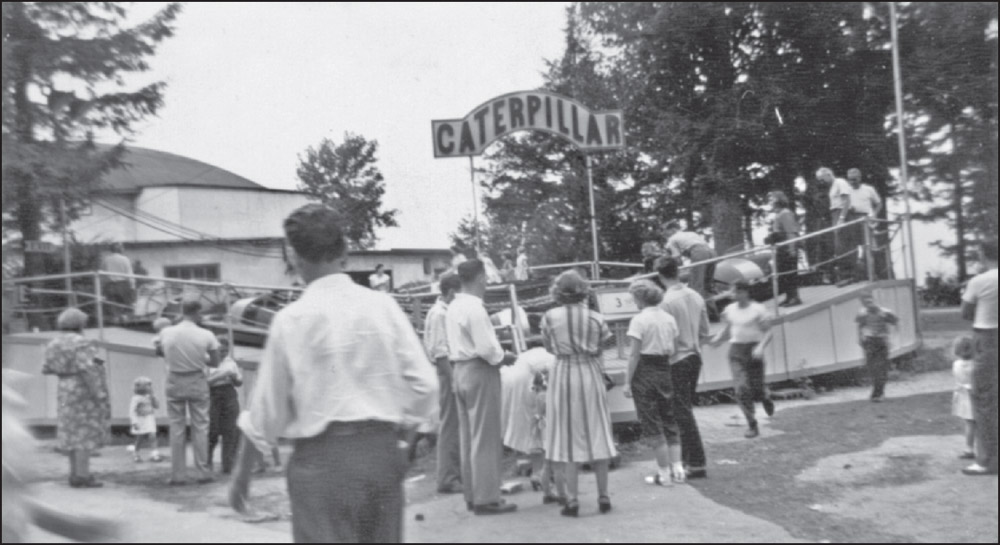
In 1948, upgrades continued at Waldameer Park with the Caterpillar replacing the Whip next to Rainbow Gardens. Built by the Allan Herschell Company of North Tonawanda, New York, another major manufacturer in the mid-20th century, it was an updated version of the Caterpillar that operated at the park in the 1920s. (WP.)

This picture shows a busy day on the midway in the late 1940s. The new National Amusement Devices train ride is picking up a load of riders on the left, while two of the park’s original kiddie rides—the Blue Goose, next to the carousel, and the airplane swing to its right—are popular with the younger set. (WP.)
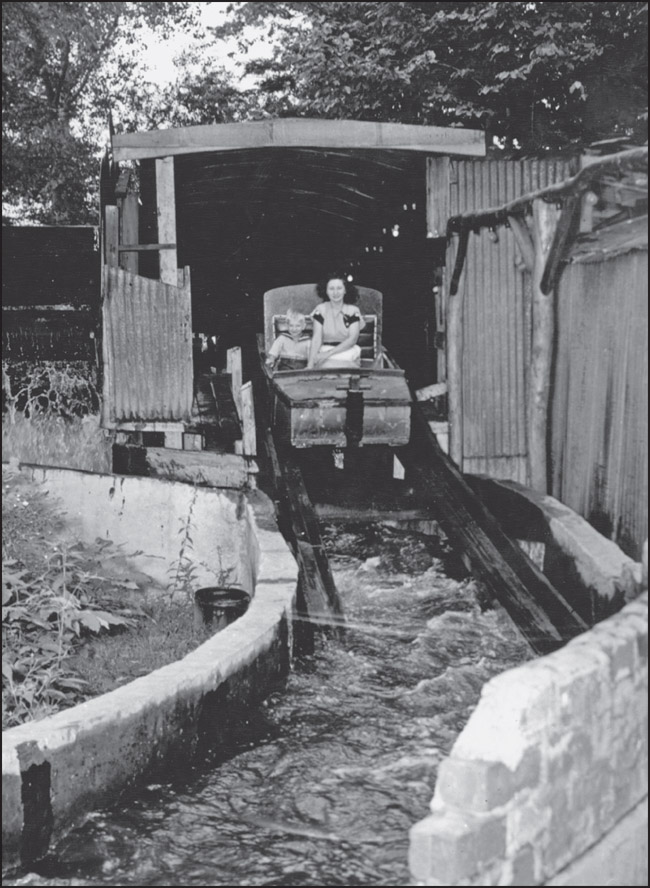
Waldameer Park’s Mill Chute ride underwent a transformation in the years following World War II. The large splashdown hill was removed and replaced with a much smaller drop, and the ride was renamed Mill Run. Initially, the trough through which boats floated was covered with a tunnel, but that was soon removed. (WP.)
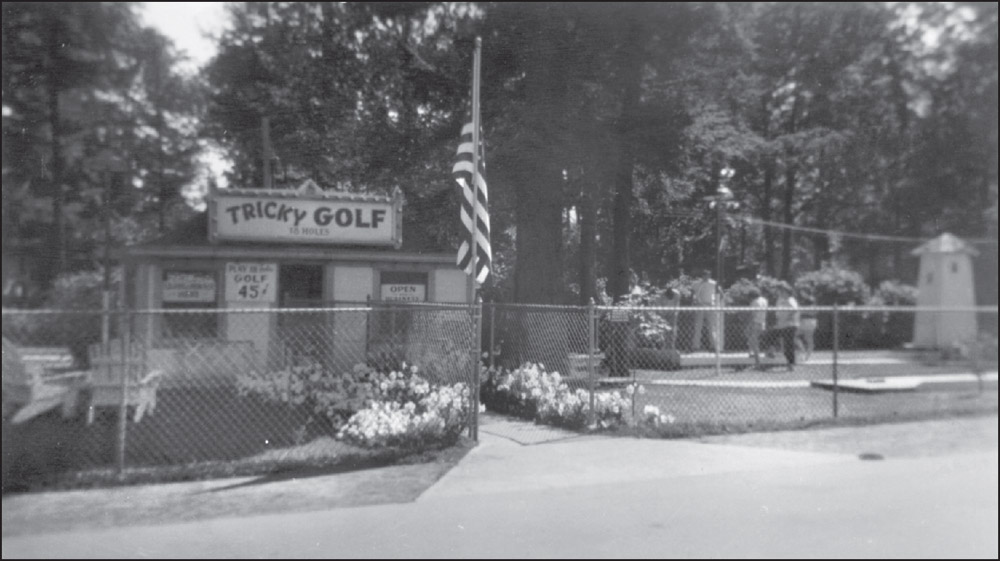
When the tunnel was removed from the Mill Run, the expansive grassy area in the middle of the ride was turned into a miniature golf course called Tricky Golf. Miniature golf was a popular diversion in the 1950s and 1960s with courses springing up around the country. Many amusement parks also added them, but Waldameer’s was gone by the late 1970s. Not only did golfers have to contend with obstacles on the course, but they were also challenged by a water hazard of a different type—the Mill Run trough. (Above, WP; below, JF.)
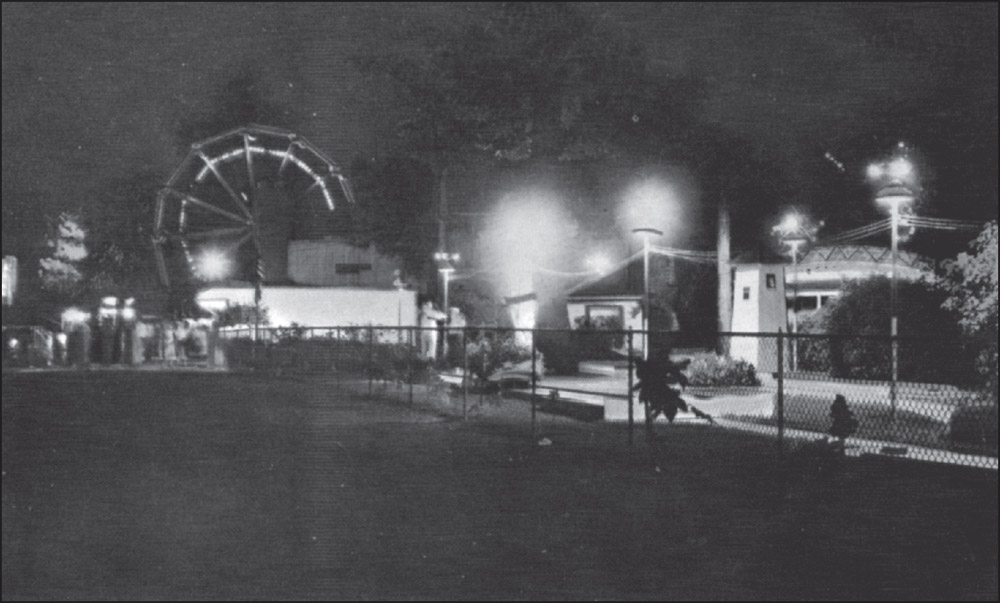

In 1946, Waldameer Park announced plans to build a new roller coaster. It took four years until conditions were right to begin construction The Caterpillar and Fun in the Dark rides were sold to accommodate the expansion, and a site was selected next to the carousel where the train operated. The train was relocated. (WP.)

This picture shows park employees celebrating the arrival of another load of lumber for the Comet. A young Paul Nelson (fourth from the left), who was still in high school, skipped football practice to assist with the delivery. When this picture appeared in the local newspaper, his coach caught him and made him run laps the entire next practice. (WP.)
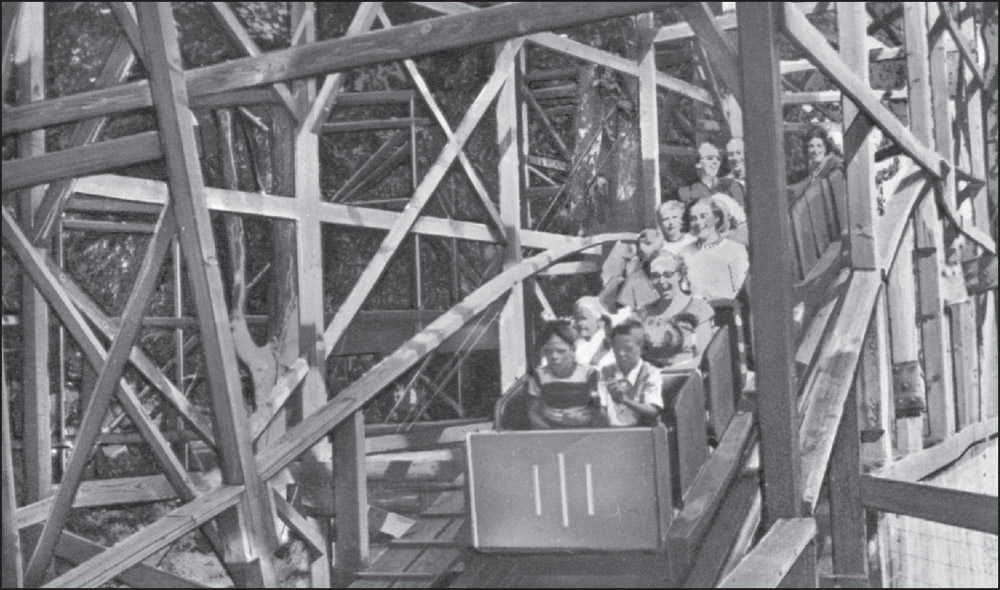
To design and build the Comet, Waldameer Park hired the Philadelphia Toboggan Company (PTC) of Germantown, Pennsylvania, the leading roller coaster manufacturer of the era. PTC’s lead designer created a family ride, standing 37 feet tall with a first drop of 25 feet. Still a popular attraction, the ride reaches a maximum speed of 25 miles per hour. (Both, JF.)
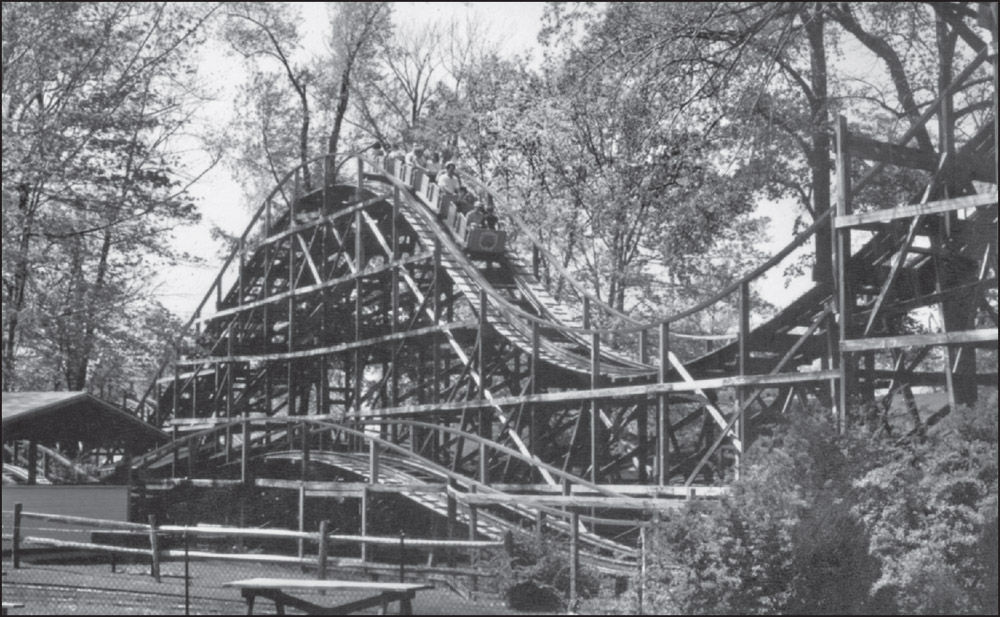

Despite the opening of new rides following World War II, traditional attractions such as the park’s 1905 carousel still remained popular. It is shown here in 1951. (WP.)

Amusement parks started opening separate kiddie lands at their facilities in the late 1920s. But with the postwar baby boom in full force in the 1950s, they became commonplace. After having only a few kiddie rides, Waldameer Park greatly expanded its selection in the 1950s, consolidating them in their own special area. (JF.)

Among the leading manufacturers of kiddie rides during this era was the Allan Herschell Company of North Tonawanda, New York. It produced a full line and could outfit a complete kiddie land. One of its products was the Sky Fighter, featuring miniature rocket ships. Waldameer’s Sky Fighter remains a popular kiddie attraction. (WP.)

Another major manufacturer of kiddie rides was Ben Schiff and Associates of Miami Beach, Florida. The company provided Waldameer’s kiddie boat and pony cart rides, both of which are still entertaining Waldameer’s youngest guests. (JF.)

Monkey Island remained a popular attraction well into the 1950s. Spectators still enjoyed spending time watching the Rhesus monkeys frolic in their own special habitat, but by the middle of the decade, the park was forced to close the longtime attraction. Reportedly, America’s fledgling space program used so many monkeys that the park could not replenish its supply. (Both, WP.)


While Monkey Island ceased to operate, Waldameer Park moved on. This postcard of Monkey Island shows two popular rides in the background. Behind the Flying Scooter is the Looper. Another creation of the Allan Herschell Company, it featured circular cars in which riders could flip themselves upside down. The Looper was located at the current site of the Tilt-A-Whirl. (WP.)
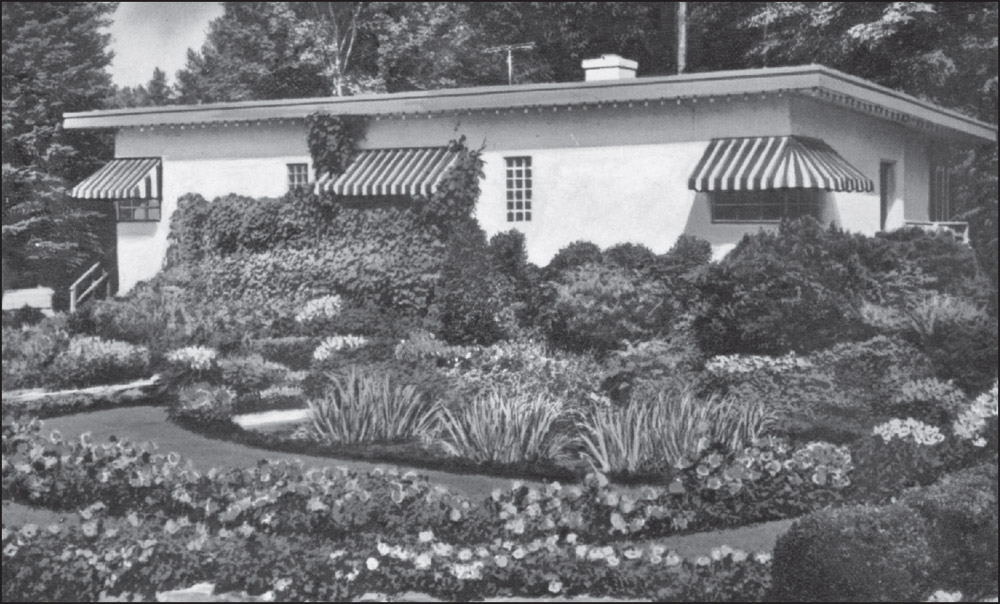
Alex Moeller’s wife, L. Ruth, loved gardening and for many years maintained a rock garden in front of the park office. (JF.)
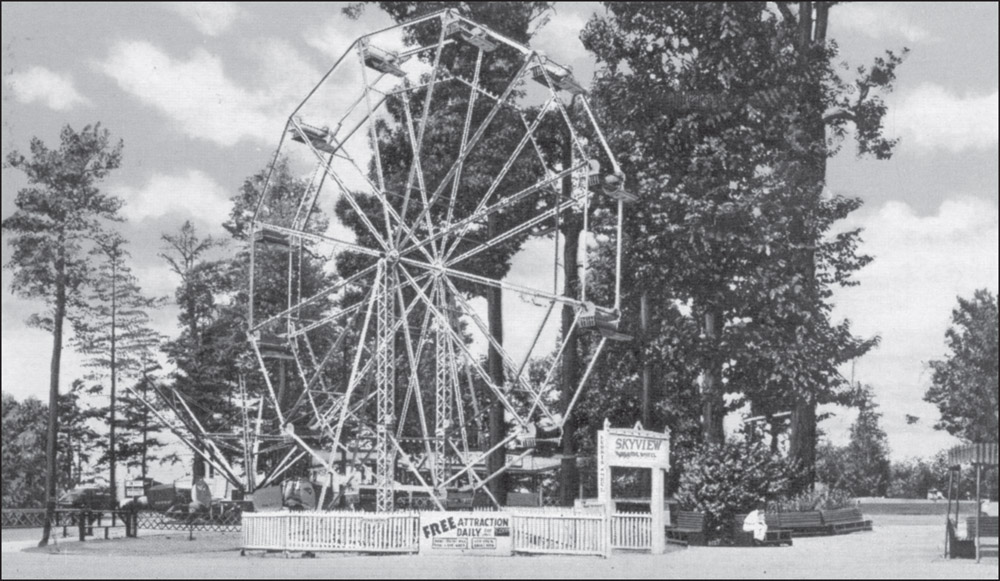
The park’s Skyview Ferris wheel met an untimely end in the late 1950s. By now, Paul Nelson had worked his way up to general manager. Moeller asked him to move the Skyview from the south end of the park to the current location of the gift shop. Rather than disassembling it, Nelson had a crane lift the entire ride and transport it down the midway. According to Nelson, the crane hit a bump, and both it and the wheel tipped over. The Ferris wheel was a total loss. The next morning Moeller asked Nelson if the job was complete. “It’s done,” Nelson replied. While Moeller was not happy, he chalked it up as a learning experience for Nelson, as long as he did not do something like that again. Waldameer Park would be without a Ferris wheel until the 1990s. (JF.)

As Waldameer Park entered the 1960s, more contemporary rides were installed. The Flying Coaster was placed next to the former location of Monkey Island in 1962. Manufactured by Aeroaffiliates of Fort Worth, Texas, the ride featured eight cars that travel along a circular track. Each car would travel over a ramp and go airborne, before being hydraulically lowered to the ground. It operated until 1994. (JF.)

Around 1964, the Tilt-A-Whirl was added next to Rainbow Gardens where the Whip, Caterpillar, and Looper previously operated. Built by Sellner Manufacturing of Faribault, Minnesota, it has been a midway staple since its invention in 1928 with seven cars spinning around an undulating platform. It remains in operation. (DH.)
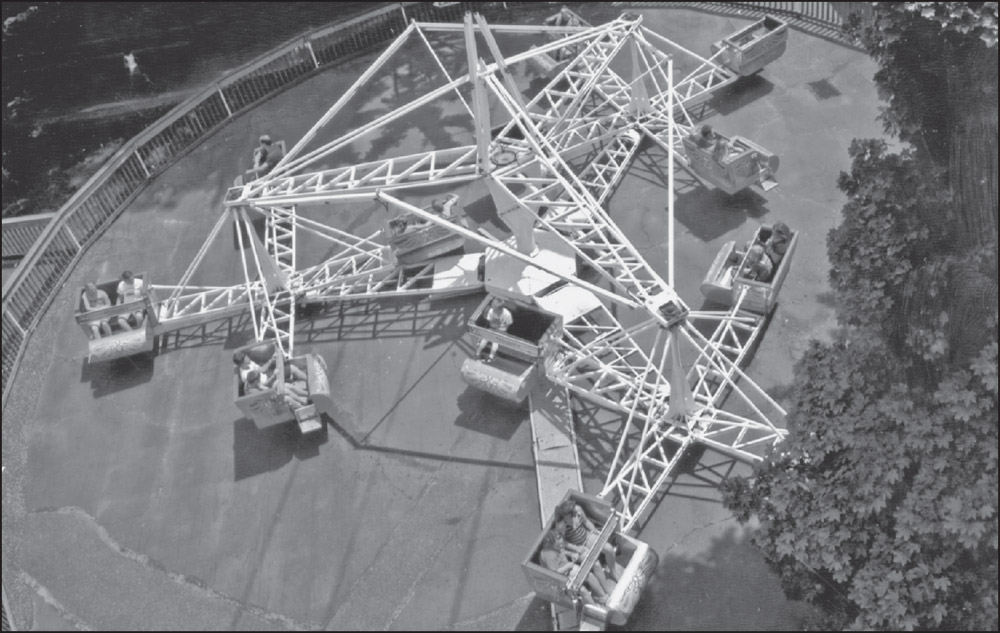
Also joining the ride lineup in 1964 was the Scrambler. First manufactured in 1955 by the Eli Bridge Company of Jacksonville, Illinois, the Scrambler was installed on the south end of Waldameer’s midway, where it remains to this day. (WP.)

By the early 1970s, Waldameer Park was evolving. Midway staples, such as the carousel and Comet, remained popular. Meanwhile in the background is the Scrambler. And although, the Aerial Swing with its rocket ship cars still spun, its days were numbered. (WP.)

In 1970, Waldameer undertook one of its largest postwar projects, the Whacky Shack. The park had been without a dark ride since Fun in the Dark was sold in 1950. After being impressed with some of his work at other amusement parks, Bill Tracy, the leading dark ride designer of the era, was contracted by the park to construct the ride. (RS.)

The ride was erected on the north end of the midway in a building measuring 50 by 82 feet. Behind its soaring colorful facade, the ride features 488 feet of track over two levels. Of the 46 dark rides built by Tracy, Whacky Shack is one of six still in operation. (JL.)
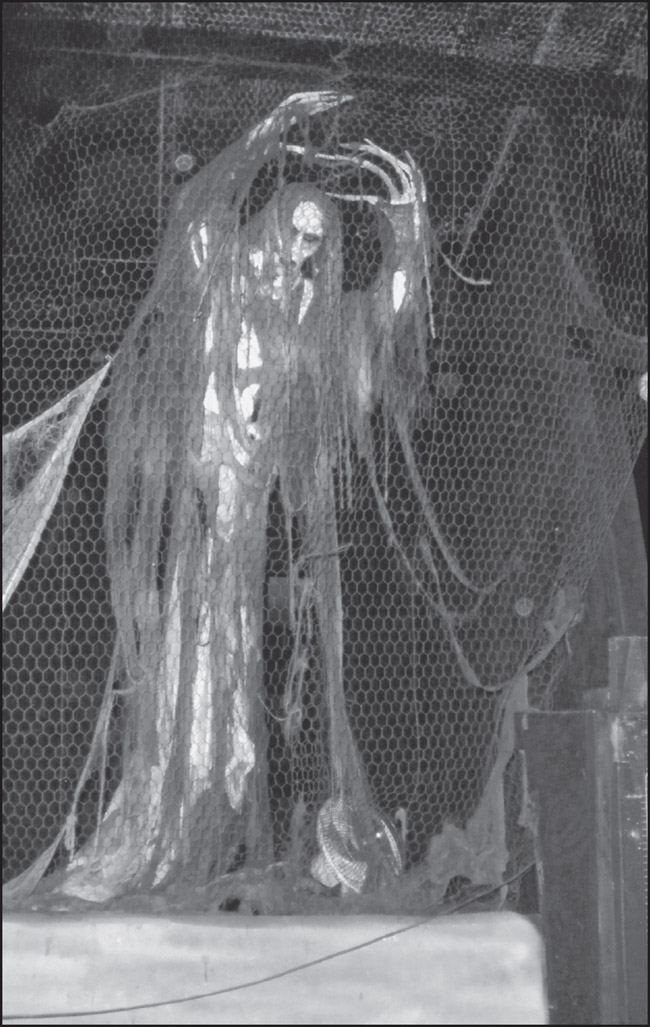
The Whacky Shack is the epitome of a classic amusement park dark ride. It has 18 stunts, ranging from the traditional monsters and skeletons to a swooping drop, revolving barrel, loud noises, and lighting effects. (Both, DH.)


Whacky Shack was a huge success, and two years later, Bill Tracy was again hired by Waldameer Park to design a new attraction. Pirate’s Cove is an updated version of a traditional fun house. Known as a walk-through attraction, customers make their way through a series rooms with a variety of stunts. (JL.)

Over 15 stunts are featured in Pirate’s Cove, including the shuffleboard, the cyclone room, a tilt room, the barrel maze, the jail maze, and the swinging bridge. Pirate’s Cove was one of 15 walk-through attractions designed by Bill Tracy and is one of only two remaining in operation. (DH.)

As its name implies, Pirate’s Cove has a pirate theme, and the characters inside show pirates in various adventures, including steering the boat, consuming bottles of rum, and fighting off sea creatures. (Both, DH.)
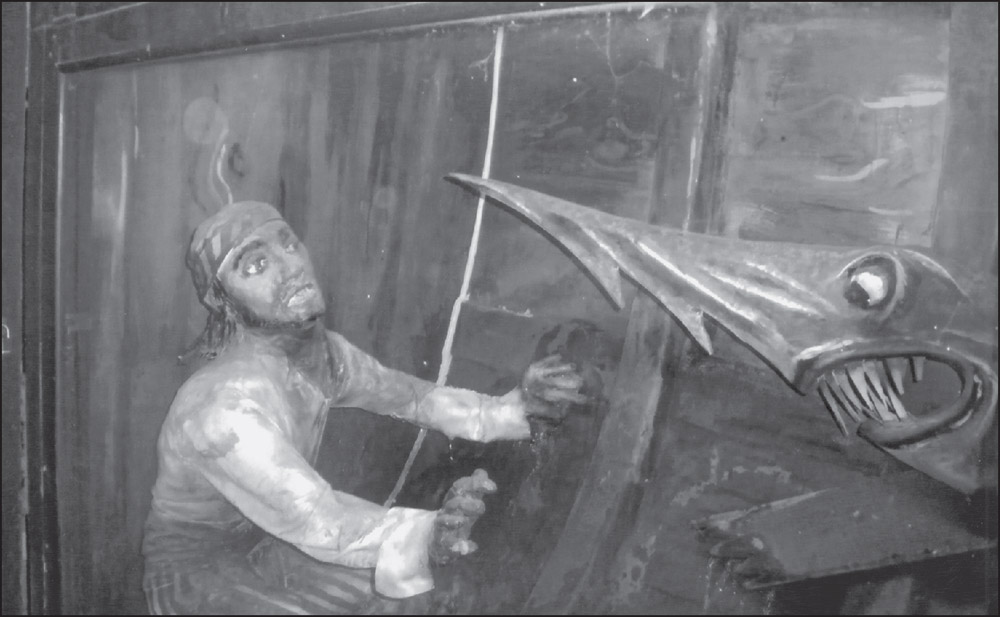
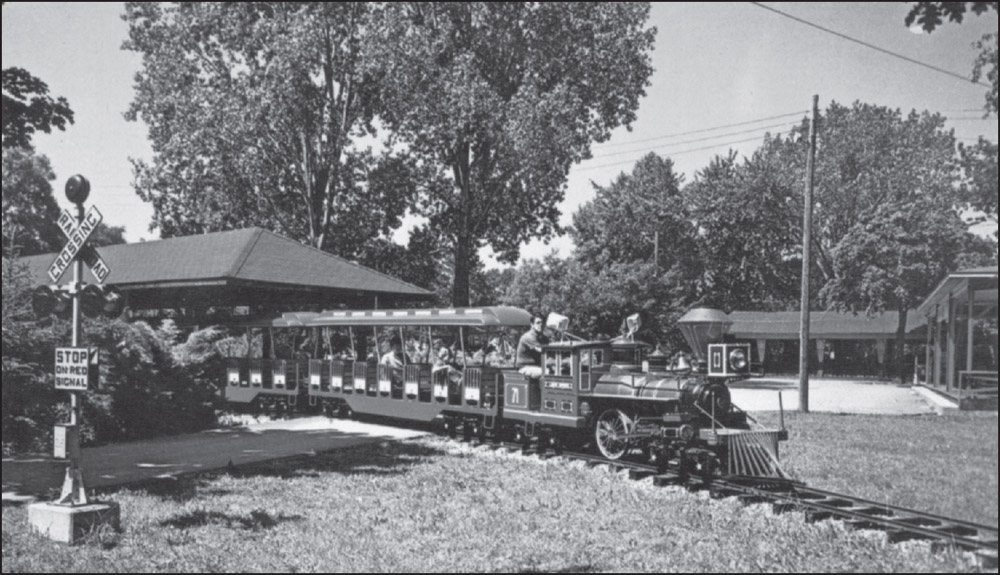
Pirate’s Cove was not the only new attraction added in 1972. At the other end of the park, construction was completed on a new train ride. Named the L. Ruth Express in honor of L. Ruth Moeller, the train is a C.P. Huntington model miniature train manufactured by Chance Rides of Wichita, Kansas, the most popular ride of its type in the world. The L. Ruth Express takes riders from a station in the picnic grove to the far northern end of the park near the kiddie land and back. Nelson laid out the track to accommodate two trains in case the park grew to the point that the extra capacity would be needed. A second train was added in 2012. (Both, JF.)


Along with new attractions, Nelson focused much of the 1970s on replacing older rides with newer ones. Among the first was the Aerial Swing. Dating back to the earliest years of Waldameer Park, the ride had seen numerous upgrades over the years with the original wicker gondolas giving way to airplanes in the 1920s and rocket ships in the 1940s. By the 1970s, customers were looking for something a little more exciting, and the Paratrooper replaced the Aerial Swing in 1973. Built by Frank Hrubetz and Company of Salem, Oregon, it was a flashy addition to the changing midway. (Both, WP.)

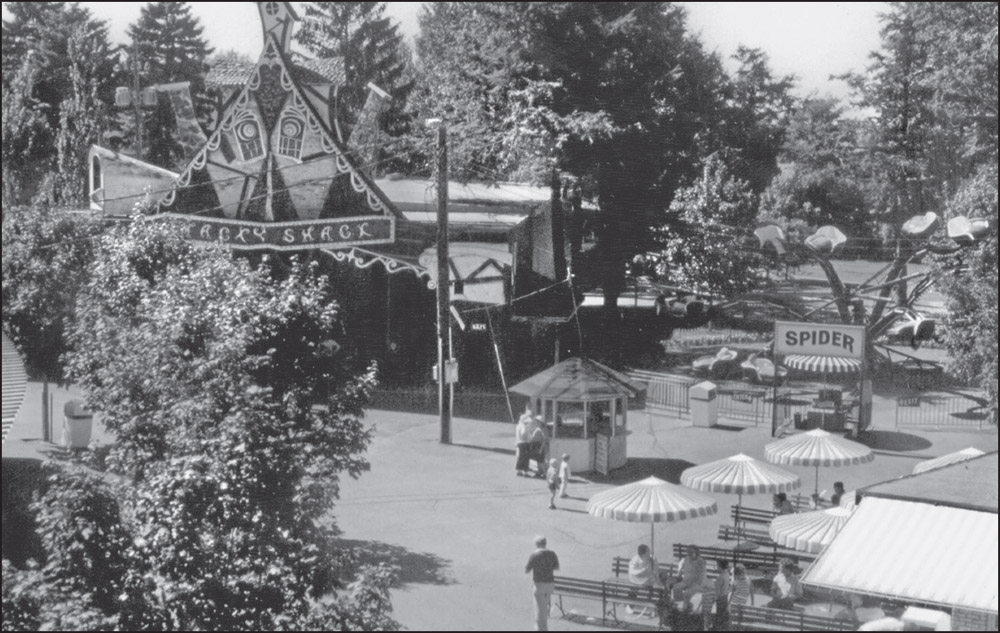
In 1977, another older attraction was replaced by a flashier new ride. After 32 years of operation, the Flying Scooter was removed, and in its place, the Spider was installed. Manufactured by Eyerly Aircraft Company of Salem, Oregon, the Spider features six arms with two two-person cars at the end that each spin independently. (JF.)

The Mill Run continued to be a popular ride; although, the mild boat ride seemed increasingly out of place at the changing amusement park. It too would eventually be replaced. (JL.)

In 1978, Waldameer Park added the Sky Ride. The ride was built by the O.D. Hopkins Company of Contoocook, New Hampshire, which specialized in producing rides for smaller amusement parks. The Sky Ride’s loading station was located at the north end of the park, where Monkey Island had been. It carried riders over the midway to the south end of the park near the recently erected bumper car building where it turned around and returned to the station. (Above, WP; below, RS.)
